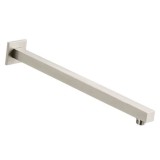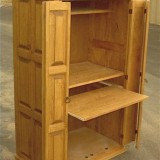How to Make a Worm Farm Out of an Old Bath
Essential aspects of creating a worm farm from an old bath include preparing the bath, gathering necessary materials, adding worms, providing bedding and food, and maintaining the farm. Understanding these key aspects is crucial for establishing a successful and thriving worm farm. This article will delve into the details of each essential aspect to guide you in building and maintaining a productive worm farm out of an old bath.
Preparing the Bath
An essential first step is preparing the old bath for use as a worm farm. Thoroughly clean the bath to remove any dirt or debris. Drill drainage holes in the bottom of the bath to allow excess moisture to drain away. Placing the bath in a shaded location outdoors or in a garage or shed will provide a suitable environment for the worms.
Gathering Necessary Materials
Next, gather the necessary materials for your worm farm. These materials include:
- Worms (red wigglers or tiger worms are commonly used)
- Bedding material (shredded newspaper, cardboard, or straw)
- Food scraps (fruits, vegetables, coffee grounds, eggshells)
- Lid or mesh cover for the bath to prevent worms from escaping
- Moisture meter to monitor the moisture level of the bedding
- Thermometer to monitor the temperature within the worm farm
Adding Worms
Introduce the worms to their new home by gently placing them in the prepared bedding. Start with a small number of worms and gradually increase the population as the farm becomes established. Red wigglers or tiger worms are suitable choices for a worm farm due to their ability to thrive in the conditions of a bath-based farm.
Providing Bedding and Food
Provide a layer of bedding material for the worms to burrow into and feed on. Shredded newspaper, cardboard, or straw can be used as bedding. Regularly add food scraps to the bedding to provide nourishment for the worms. Avoid adding meat, dairy products, or cooked foods, as these can attract pests or harm the worms.
Maintaining the Farm
To ensure the long-term health and productivity of your worm farm, regular maintenance is essential. Monitor the moisture level of the bedding using a moisture meter, and adjust it by adding water or dry bedding as needed. Keep the temperature within the worm farm between 55-77°F (13-25°C) using a thermometer. Provide adequate ventilation by partially covering the bath with a lid or mesh cover to prevent odors and maintain airflow.
Conclusion
Creating a worm farm out of an old bath involves preparing the bath, gathering materials, adding worms, providing bedding and food, and maintaining the farm. By understanding and implementing these essential aspects, you can establish a thriving worm farm that will provide nutrient-rich castings for your garden or compost.

Building A Worm Farm In Bathtub Ecos

How To Make A Bathtub Worm Farm Brisbane Sustaility Agency
How To Build A Worm Farm In An Old Laundry Tub Little Eco Footprints

Building A Worm Farm In Bathtub Ecos

How To Build A Bathtub Worm Farm From Recycled Materials
How To Build A Worm Farm In An Old Laundry Tub Little Eco Footprints

Turning A Tub Into Worm Bin Geoff Lawton Style

How To Make A Worm Farm Out Of An Old Bathtub One Green Planet

Bathtub To Diy Worm Farm Make

Bathtub Worm Bin








